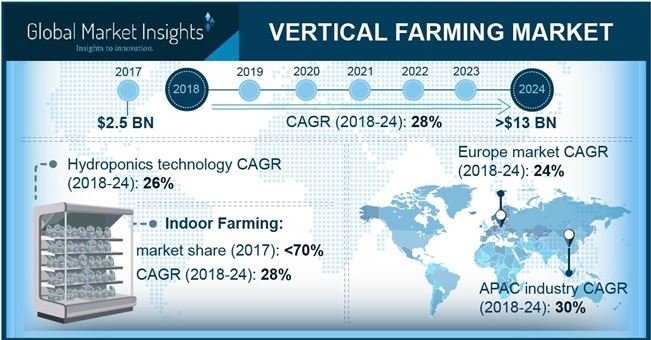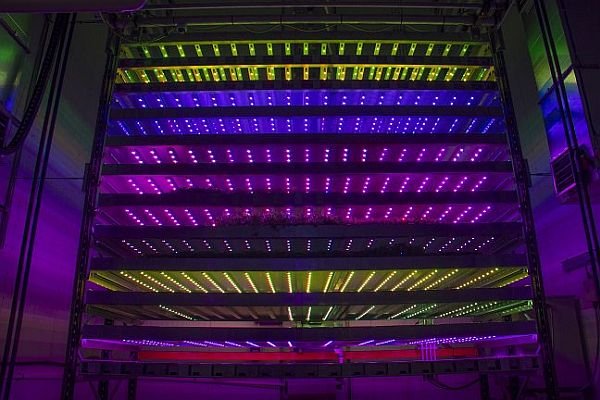Many different types of vertical farms exist today, but it wasn’t until 2015 that a reduction in LED light prices made this sort of agriculture feasible.

High yield associated with vertical farming over conventional farming, year-round crop production regardless of weather conditions, advancements in light-emitting diode (LED) technology, and the requirement of minimal resources are the major driving factors for the growth this farming market.
The vertical farming industry is now predicted to increase at a compound annual growth rate of 25.0 percent from $3.1 billion in 2021 to $9.7 billion by 2026. However, like with any expanding sector, there are barriers to successful, large-scale vertical farms.

More and more agricultural production is moving indoors, where the environment can be regulated and crops may thrive without soil. This farming is made feasible by hydroponics, which allows plants to be cultivated with water and fertilizer solutions.
Vertical gardens have significant promise for food security as arable land disappears throughout the world. Lettuce, for example, is often grown in these farming. It grows quickly and easily and has consistent demand throughout the year.

There are no industry standards or standardized measurements for vertical growth design, especially when the purpose is to produce maximum food from indoor sources. There is little question that vertical farms will play a big role in urban farming and agriculture in the future. Renewable energy access will be imperative for vertical farms to thrive.
Reference- Business Wire, Clean Technica, Futurism, National Geographic






